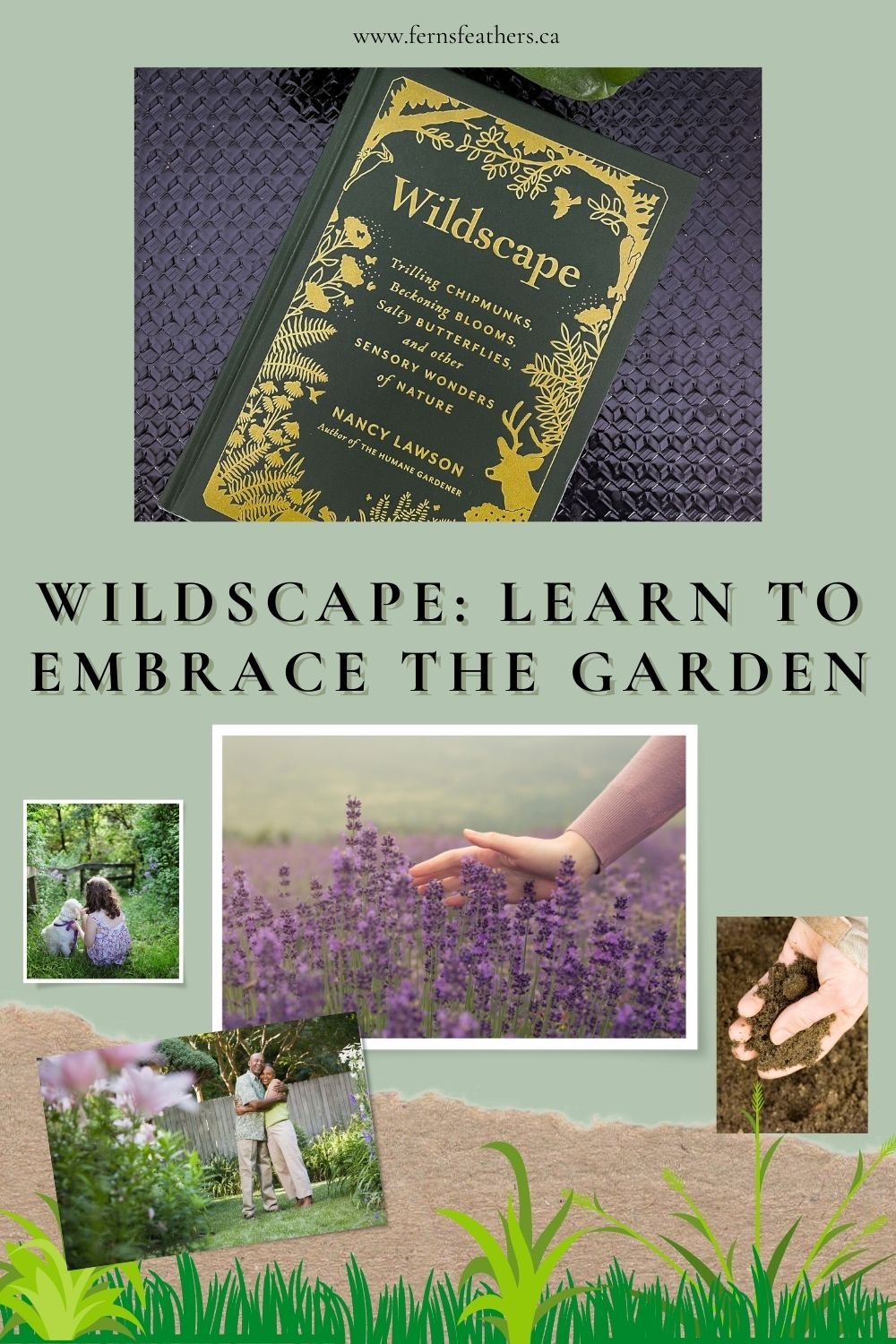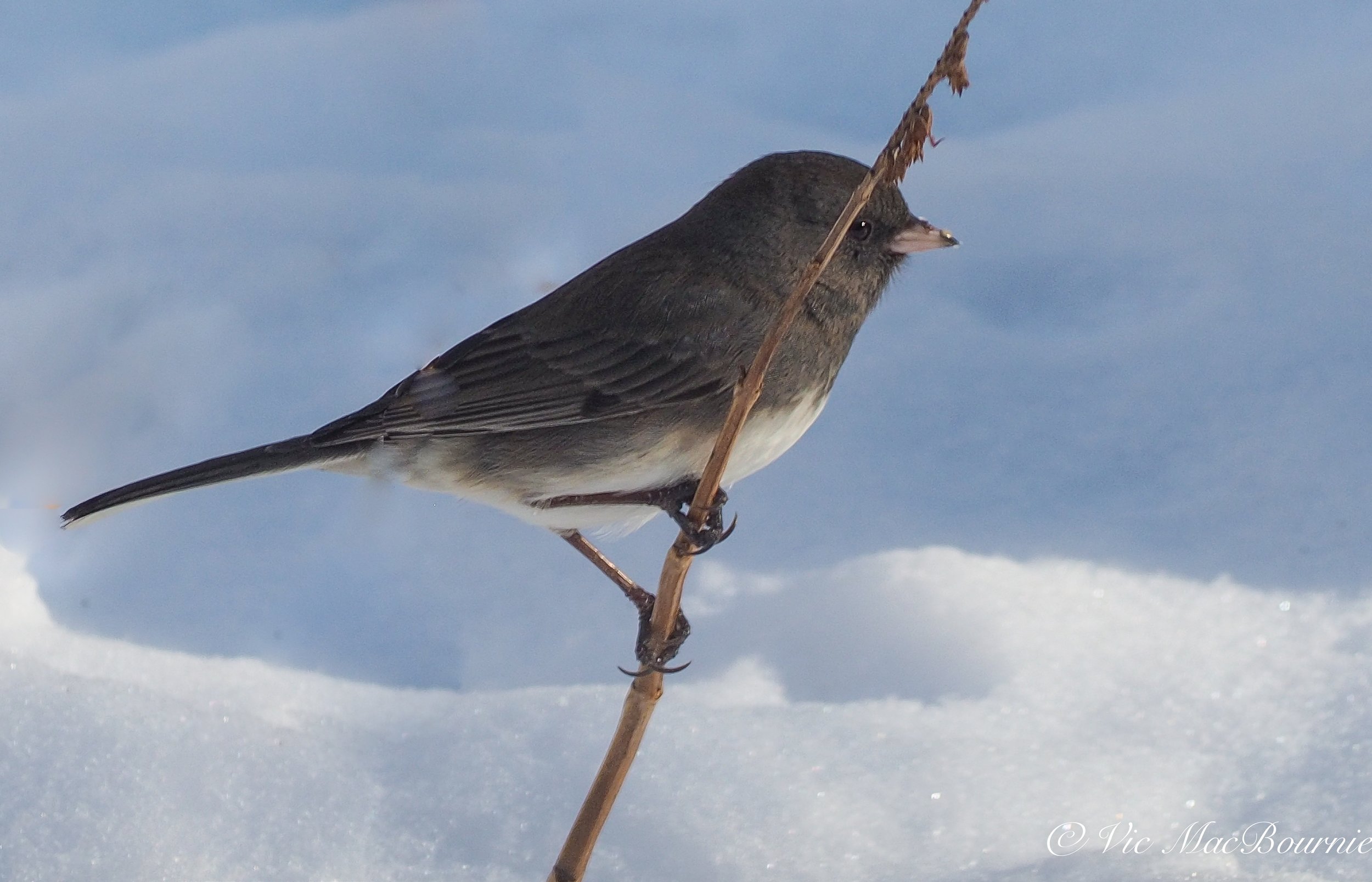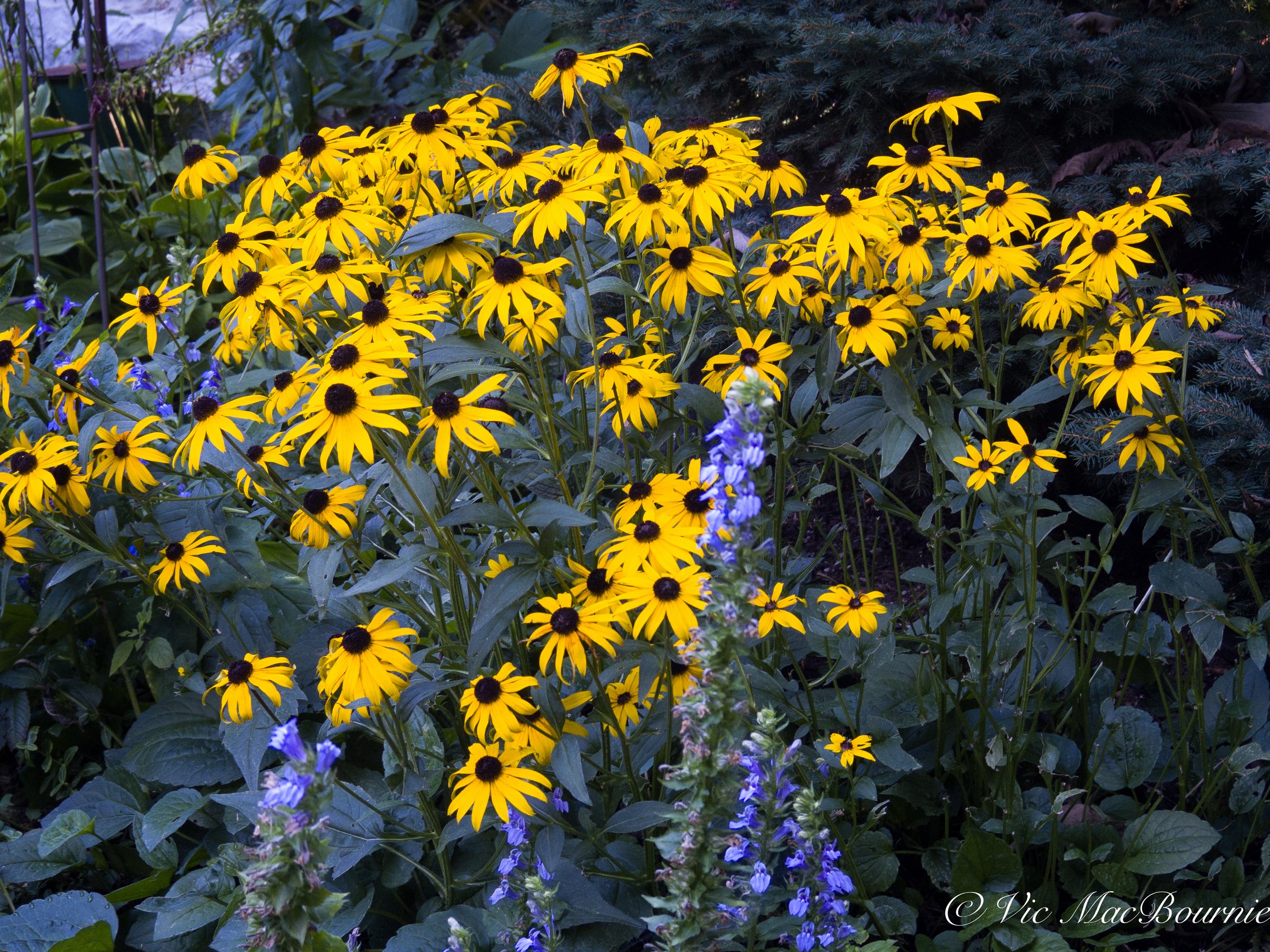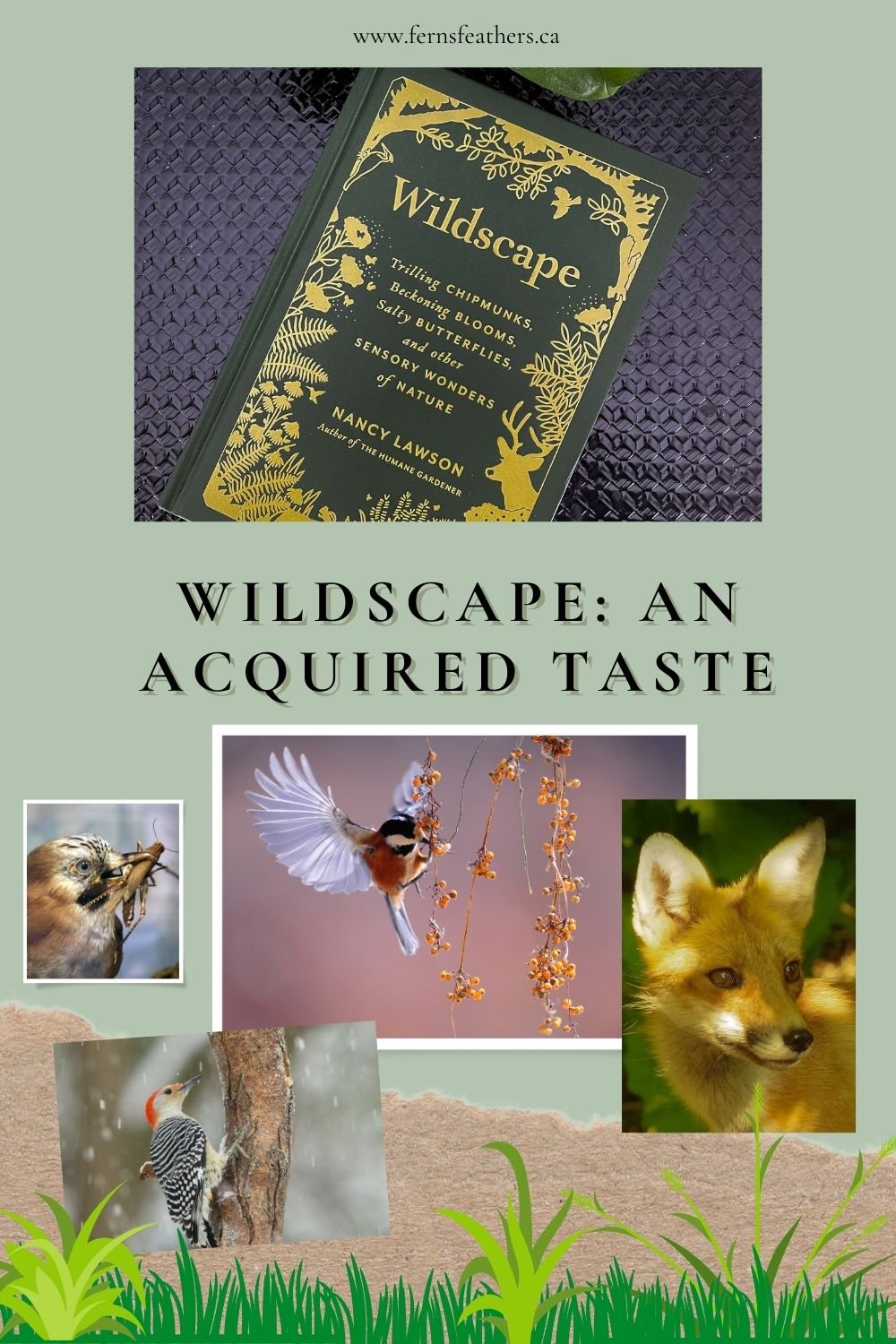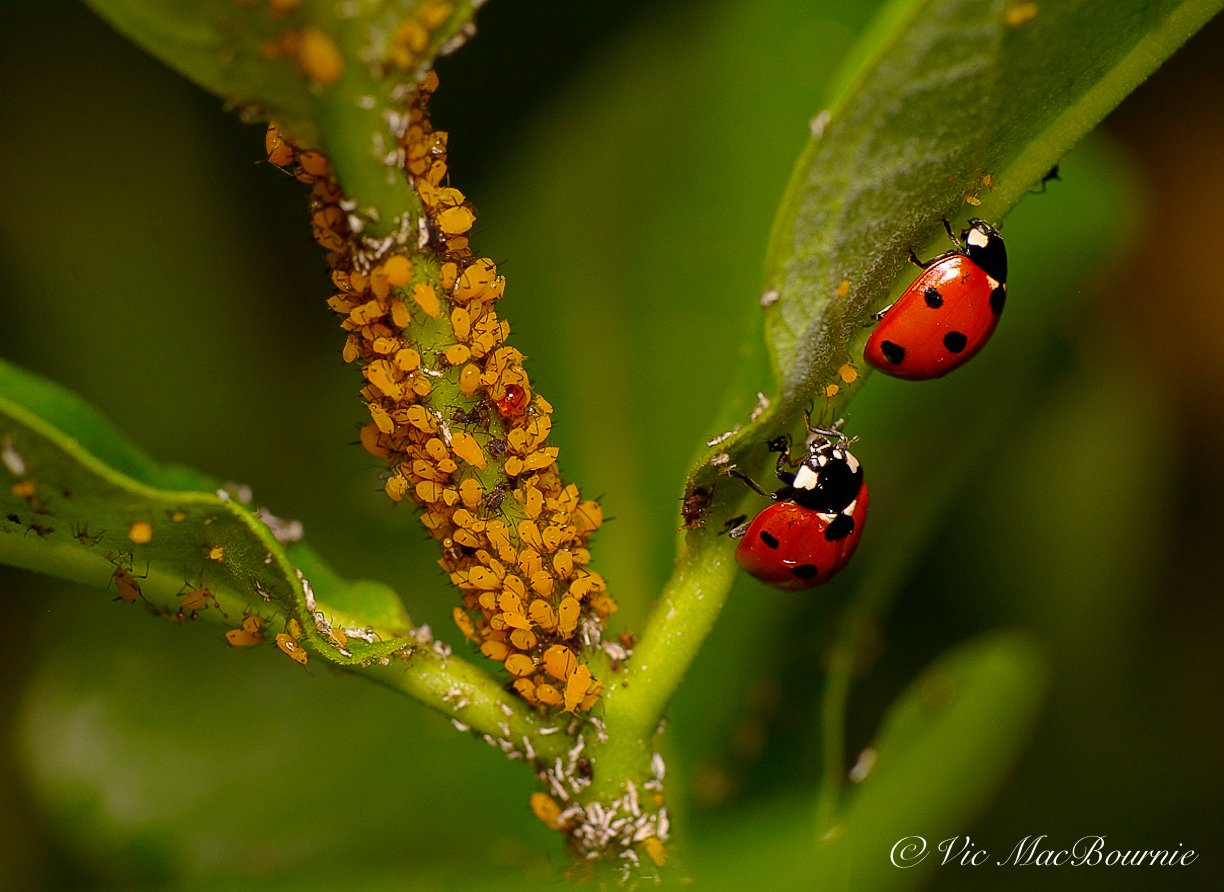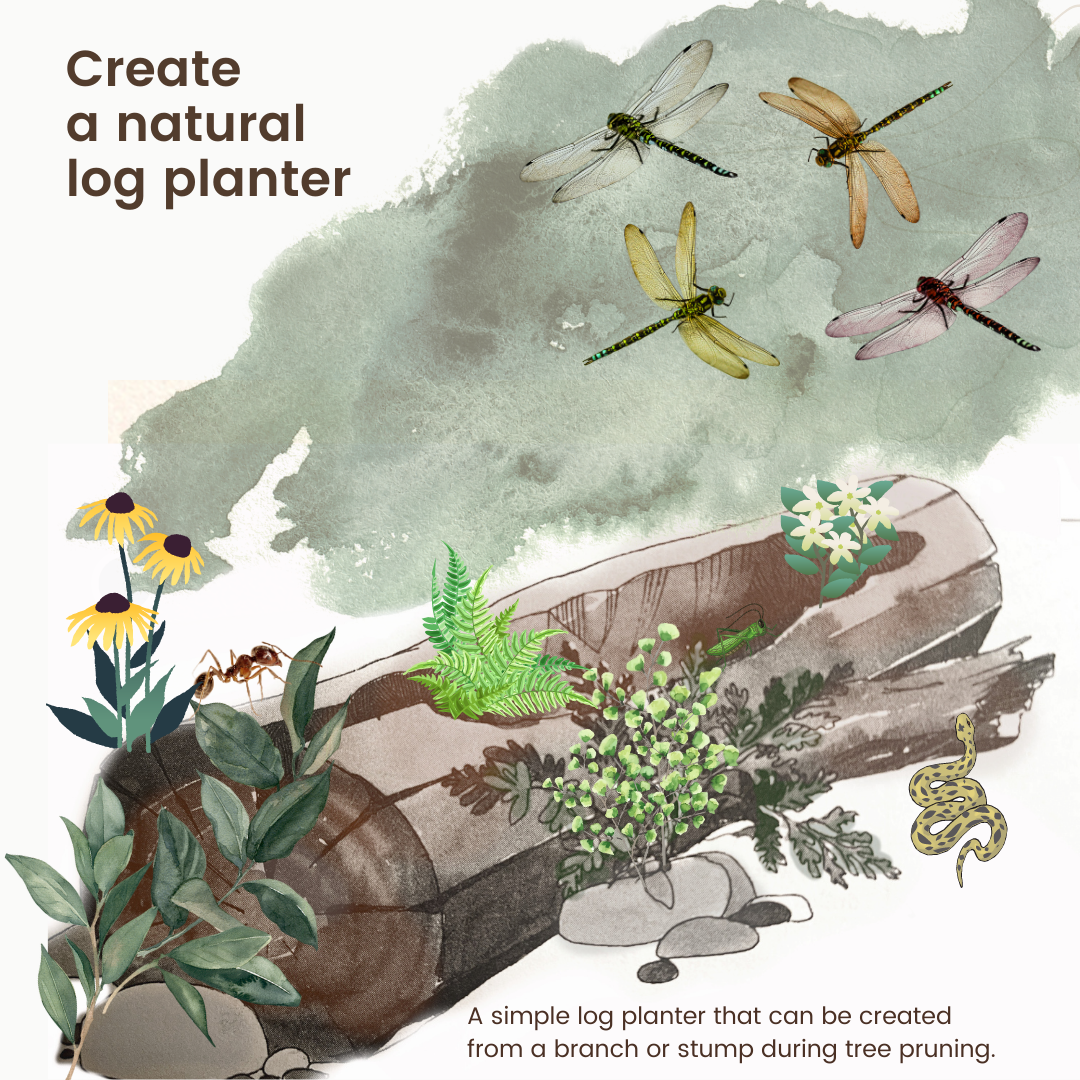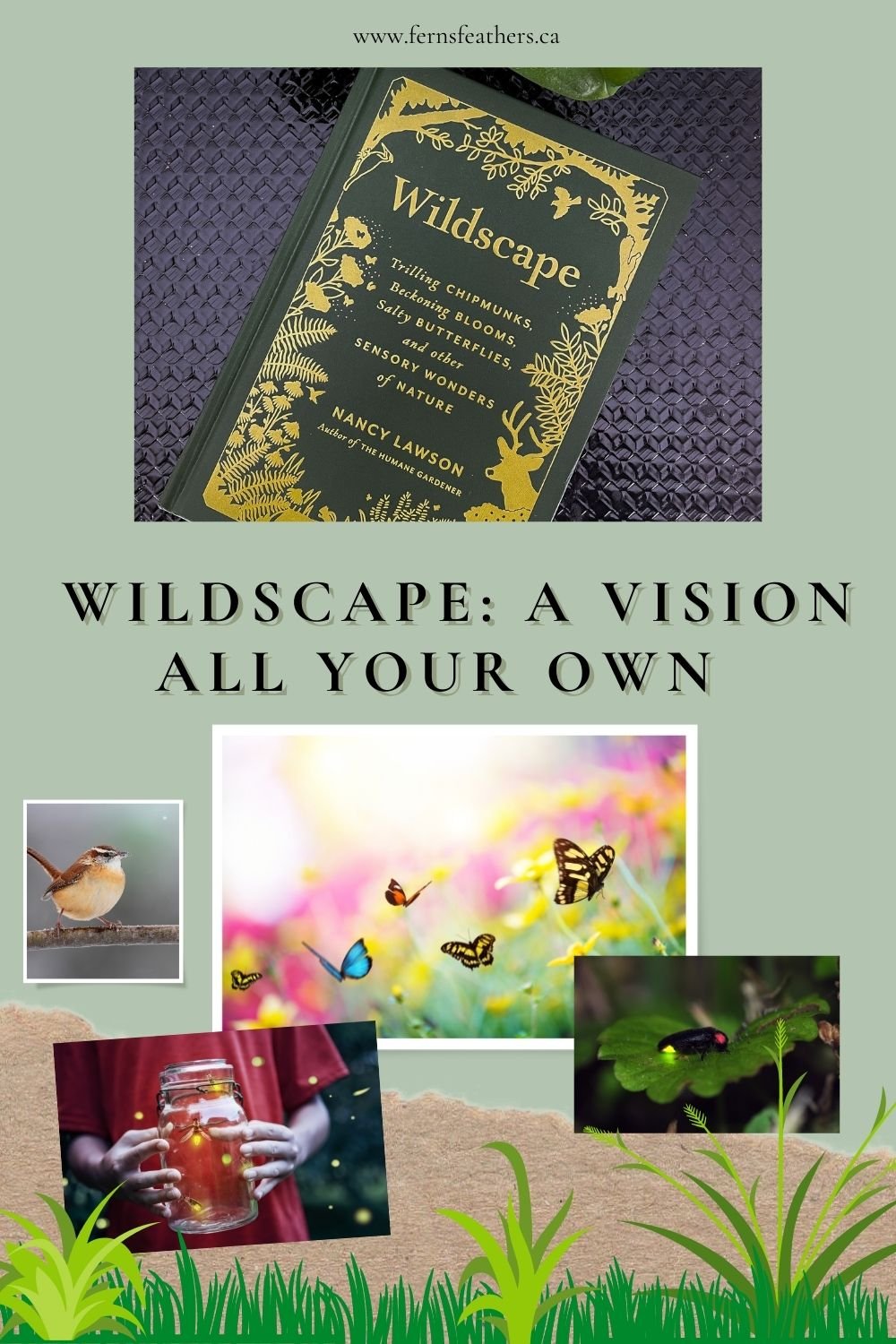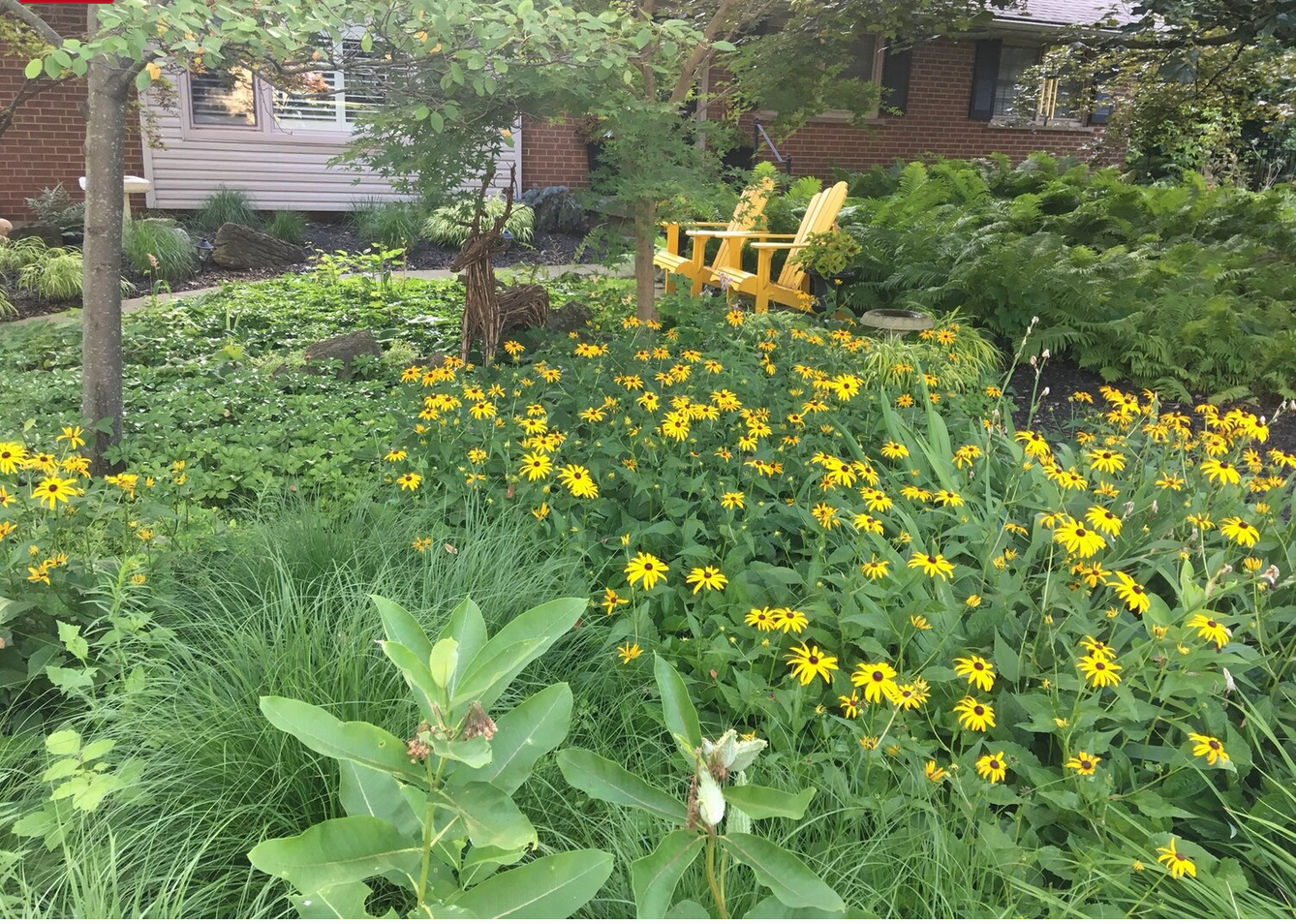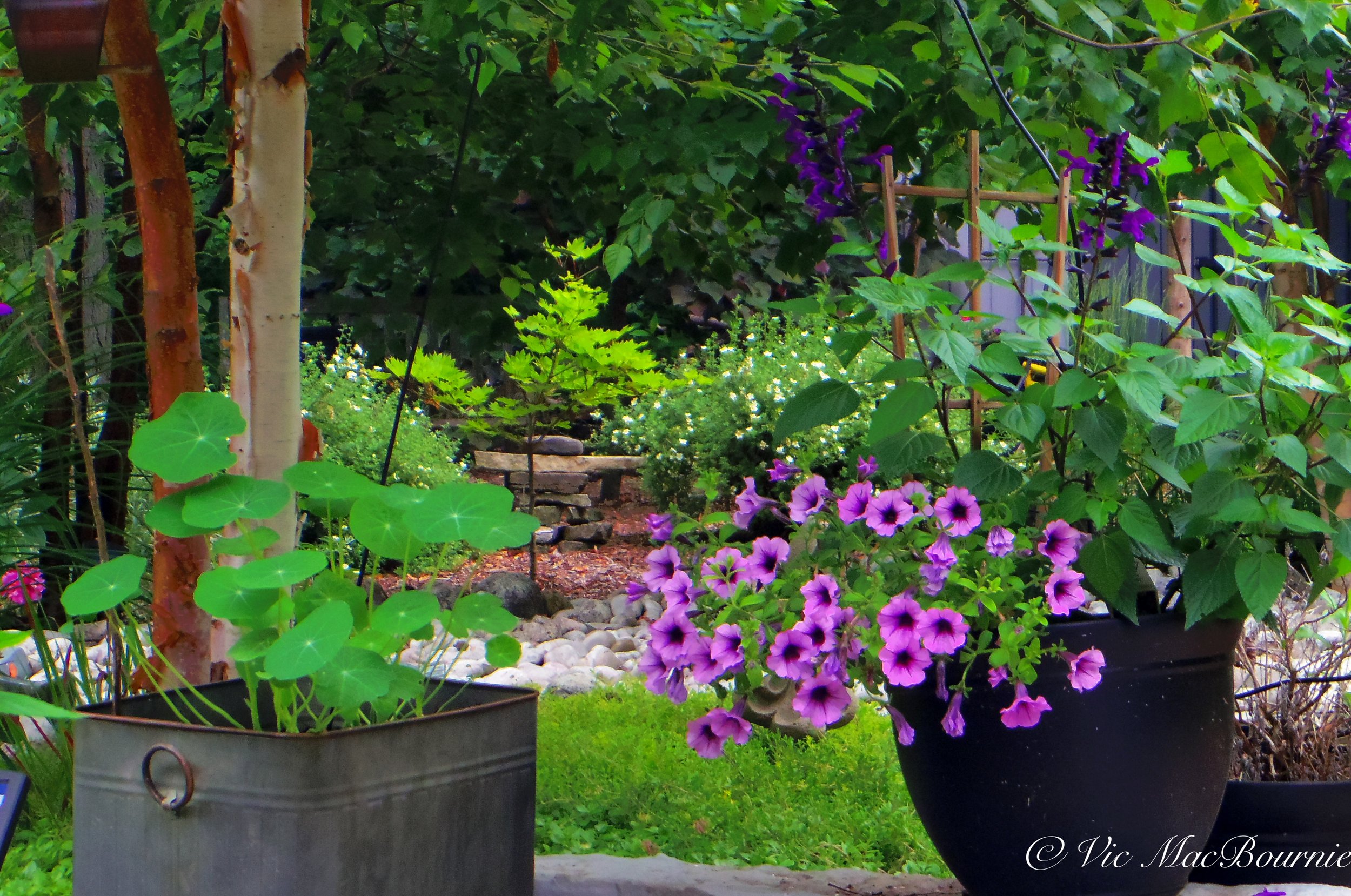Wildscape: Learning to embrace our gardens
Learning to embrace nature in our gardens is an important step to discovering the beauty of our gardens and the wildlife that call it home.
Author urges gardeners to stay in touch with nature, our gardens and wildlife
Touch may seem a little strange in a gardening sense. We can all relate to scent, sound and visual senses in the garden and the wildlife that call it home, but touch, well, that’s not something we focus on in quite the same way.
The other senses in the garden come to us – whether we choose to or not, we smell the flowers, hear the birds, and admire our little friends from near and far.
The sense of touch, however, requires us to reach out and experience it. Many times that ability to touch something in our gardens is out of reach – the bird in the tree, the doe with her fawn.
What we may overlook, however, is the way our gardens reach out to us for an embrace.
For Nancy Lawson, the author of Wildscape: Trilling Chipmunks, Beckoning Blooms, Salty Butterflies, and other Sensory Wonders of Nature (PA Press, Princeton Architectural Press, New York) touch is rooted in memories of her late father and the special relationship between them.
She tackles the sense of touch in the fourth chapter of her five-chapter exploration of garden senses in her newest book following the highly successful book The Humane Gardener.
For more on Nancy’s newest book, check out the four other posts beginning with How senses play a key role in our gardens.
If The Humane Gardener, was a plea for respect and compassion toward all species and a call for gardeners to welcome all wildlife to our backyards, Wildscape is a call to action for gardeners to recognize the problems humans are creating and how our actions are, in many cases, forcing garden wildlife to change natural behaviours to survive.
How our gardens helped us survive the Covid lockdown
In the second chapter of Wildscape, Nancy brings us back to the summer of 2020 when the world was in the throes of the COVID lockdown.
It was a time when touch, at least between humans, was difficult at best. A time of seclusion, of feeling lonely and out of sync with the world around us as most of us remained locked in our very small worlds restricted to our apartments, homes and, for the lucky ones among us, our gardens.
For the author, it was the sighting of a secretive bird in her garden and the long awaited summer rains that opened a floodgate of memories and emotions.
“I’m transported to a distant forest of long ago, where I zigzag on toddler legs with my father across a trail, seeking refuge under the dense canopy when drizzle turns to deluge,” Lawson writes.
“We dash beneath the tallest tree to plot our next move. The sky booms. My dad squeezes my hand, and I look up to see if he shares my sense of foreboding. But he is smiling at me, his eyes twinkling. He says something funny, and we start laughing. I feel happy. Hand in hand, we make a break for it, dodging the downpour with the help of our tree friends, even though we are already dripping wet,” Lawson writes.
“This is my first memory of being alive, in late July 1972, two months shy of my third birthday and exactly forty-eight years before I would meet the yellow-billed cuckoo,” writes the author upon seeing the rather rare and secretive bird fly into the tulip tree.
“Decades later, that rain soaked hike remains foundational to my worldview. The trees took care of me on that day, and so did my dad. It only makes sense that I’ve spent the rest of my life loving them back. Even on the worst of days, as the trees begin to outlive my human family, I take comfort and joy in their embrace.”
And it’s that embrace from the garden – in the heart of the Covid shutdown – that helped so many of us get through the challenging time.
How Covid impacted fauna in our gardens
I remember hours out in the garden watching the birds, the chipmunks and the deer going on about their business completely unaware that a deadly virus was wiping out millions of people around the world.
In our gardens, life went on as usual except for the new-found serenity that enveloped neighbourhoods. To our feathered and furry friends in the garden, the earth was finally taking a break. The constant drone of cars, trucks and airplanes quieted. The normal hustle, bustle and inherent dangers that kept the neighbourhood fox from venturing out during daylight hours were nowhere to be seen.
Animals not normally seen were out walking the streets in some areas. Birds could hear their mates calling out and chipmunks’ danger warnings were heard loud and clear.
The birds filled the air with songs. Bees buzzed, frogs croaked, coyotes howled and fawns cried out for their mothers.
And, our gardens embraced us at a time we needed it most.
Of course, Nancy goes well beyond the garden embrace in her entire chapter on the sense of touch in the garden.
Do trees and plants need a sense of community?
She writes of how so many gardeners and landscapers are overlooking the importance of touch among plants, trees and shrubs in the garden.
Peter Wohlleben has written an entire book The Hidden Life of Trees on how important it is for the roots of trees to feel part of a community as they do in a forest or woodland setting.
If you want to know more about Peter’s book, check out my comprehensive post on The Hidden Life of Trees here.
Our garden plants, trees and shrubs also need to embrace in our garden community.
Nancy writes about how gardeners “plant specimens” in order to prevent disease from spreading. But these specimens are left orphaned, not just for a couple of weeks or years, but for a lifetime.
“Our culture inflicts this kind of social distancing on other living organisms even in the outdoors – to the point of allowing plants to grow near each other and animals to touch them has become a radical act. Landscapers and gardeners talk of “specimen” trees and “ornamental” shrubs and flowers as if they were inanimate objects made only for our own needs and pleasures, and in treating them this way we deprive the whole community, human and nonhuman alike,” she writes.
It’s considered normal to force trees to stand lonely in mowed lawns or in thick layers of the shredded carcasses of their friends. Shrubs trying to reach out to others don’t get very far before their arms are cut off with pruning shears.”
Lawson’s message is clear: If we learned anything during the multi-year Covid shutdown, it was that sense of community is important to our health. That same sense of community is important to the health of our gardens and the creatures big and small that live there.
It’s time for us to embrace that sense of community in our gardens, but we can only accomplish that by stepping back from our controlling ways and giving our gardens the opportunity to create that community naturally. A community we all benefit from nurturing.
Wildscape: Acquiring a taste for our gardens
In her book Wildscape, Nancy Lawson explores the sense of taste and how it shapes the flora and fauna in the garden.
A battle of epic proportions rages on in our gardens
When it comes to gardens, taste is not really about style, at least not in the world of Wildscape author Nancy Lawson.
Her definition of garden taste is more about a constant struggle between life and death. And, whether you know it or not, it plays out every day, every hour, probably every minute on your property.
The deer are looking for some tasty hostas to munch on, while the bees are craving pollen, the ants are looking to harvest the sugars provided by the aphids, and the snake would be happy to get a taste of that little frog tucked under the old stump. Meanwhile, those who are on the menu are combining a smorgasbord of senses to fool and create foul – even poison – signals to those who want to eat them.
It’s a battle even our garden plants have joined in on with their own defences.
In her latest book, Wildscape: Trilling Chipmunks, Beckoning Blooms, Salty Butterflies, and other Sensory Wonders of Nature (PA Press, Princeton Architectural Press, New York) Lawson explores – in five chapters – the sensory wonders of nature and the incredible adaptations insects, mammals, birds, reptiles and amphibians are sometimes forced to make to survive and prosper in our gardens.
For more on Nancy Lawson’s latest book Wildscape: check out my post on How senses play a role in our garden.
A little sweat is better than you may think
In chapter two, Lawson explores Tastescape in our gardens with the introduction of the relationship between salts from her own sweat and the diminutive blue azure butterfly.
“To this diminutive blue butterfly, the flowers bursting forth all over the gardens hold little allure right now,” Lawson writes. “The birdbath is where it’s at: prime beachfront property with a salty private sea lapping at its ceramic orange shoreline. He’s taking in not just water but whatever invisible bits of myself I’ve shed while rinsing out the dish. As far as I’m aware, I’ve left only fingerprints, but to the butterfly, the residues of my sweat might be a lifeline. And soon enough word travels fast among the azure’s cousins, because that evening as I settle into a chair on the patio with my books and a glass of water, an Eastern-tailed blue butterfly … lands on my big toe.”
It’s a dog-eat-dog world in our gardens where insects, caterpillars and other herbivores look for sustenance in our prized plants while predators big and small look to herbivores for many of their meals.
If The Humane Gardener, Nancy Lawson’s first book, was a plea for respect and compassion toward all species and a call for gardeners to welcome all wildlife to our backyards, Wildscape is a call to action for gardeners to recognize the problems humans are creating and how our actions are, in many cases, forcing garden wildlife to change natural behaviours to survive.
When it comes to taste, we gardeners may not realize our influences in the garden. Lawson’s small lesson in the importance of her own sweat did not go unnoticed.
“Animals rely on sodium for a number of physiological processes, including neuromuscular function, fluid regulation, digestion and excretion,” she writes. “From butterflies and bees to moose and squirrels, they seek natural salt licks to supplement their diets.”
Of course, the struggle to obtain sufficient amounts of salt in their diets is only a small part of the chapter on taste. Lawson’s exploration of how butterflies and a host of insects use other senses, including smell and sight to escape becoming a tasty treat is a fascinating study in itself.
“It’s hard to tell where other senses end and taste begins. Touch, smell, sound, and sight all play a role in locating food and avoiding becoming food yourself,” she writes. “The tastescape is a sensory feast filled with moments of sweetness: a tired papa cardinal teaches his fledglings to forage among flowerpots while taking frequent breaks to feed them; a mother deer and her fawn reunite in the evening for a nursing session. But it is also treacherous place, with the need to feed starting more wars among the plants and animals in one backyard than among people around the world throughout human history. From the gangs of tufted titmice mobbing a black rat snake trying to grab a stealthy meal to the frogs diving under the water lily refuges….
“In the battle of the appetites, plants can not only use their own senses to “taste” who’s eating them and shore up their defenses as necessary, but also offer sweet rewards to a mercenary army of anthropods,” explains Lawson.
A simple log planter can be an outstanding addition to any garden attracting both prey and predators.
How the tiniest of ants help shape our gardens
You may ask the very valid question: Why should we as gardeners care about the daily battles for food that go on in our gardens?
Lawson tackles these questions as well as offering advice on how we can create a more natural balance in our gardens where nature can take over from chemicals to keep everything in check.
“Even in the altered suburban landscape,” Lawson writes, “It’s not hard to observe the positive effects of leaving stumps, lining paths with logs, and creating brush piles. When neighbors cut trees, we place pieces of the trunk around our garden, making lemons from lemonade and even attracting ants who emit a lemony scent from glands near their mandibles when disturbed. The compound, called citronellal, acts as an alarm call to ants, who rush to defend the colony.”
Lawson explains the importance of ants – those same ants many gardeners look to exterminate – in our gardens.
“Watch ants in your garden, and it won’t take long to understand how profoundly they shape their surroundings and are shaped by them in turn. In our habitat they haul seeds, bits of wood, butterfly wings, and any other organic objects they can lift or drag….
From the smallest to the largest of living things our gardens are shaped and reshaped.
As Lawson concludes: “We are their allies, ensuring they have what they need to regenerate: the starter logs and starter leaves of a new, ant-filled, bee-buzzing, hummingbird-lit forest.”
Wildscape: Cultivate a vision all your own
Cultivating your own vision of beauty in your garden should include a focus on wildlife.
Author encourages readers to include wildlife in their garden vision
If you are looking for gardening advice about how to pretty up your front or back garden, Nancy Lawson’s newest book, Wildscape, is probably not for you.
But, if you are a wildlife gardener and are in need of inspiration with a very strong hit of validation, you need to get your hands on this little book packed with incredible insights, fascinating tales and love stories. And nothing better illustrates Nancy’s love for gardening and the creatures that call it home than the final chapter of her book.
It’s the culmination of a love story about her father who recently passed away, her sister and her family who fought their HOA for the right to enjoy their vision of natural beauty and, finally, it’s a passionate plea for the wildlife that face daily battles to survive in an ever changing environment.
If The Humane Gardener, Nancy Lawson’s first book, was a plea for respect and compassion toward all species and a call for gardeners to welcome all wildlife to our backyards, Wildscape is a call to action for gardeners to recognize the problems humans are creating and how our actions are, in many cases, forcing garden wildlife to change natural behaviours to survive.
In her latest book, Wildscape: Trilling Chipmunks, Beckoning Blooms, Salty Butterflies, and other Sensory Wonders of Nature (PA Press, Princeton Architectural Press, New York) Lawson explores – in five chapters – the sensory wonders of nature and the incredible adaptations insects, mammals, birds, reptiles and amphibians are sometimes forced to make to survive and prosper in our gardens.
Ferns & Feathers recognizes the value and importance the book Wildscape brings to gardeners and has decided to dedicate separate posts to each chapter of this valuable book.
For more on Wildscape, check out my reviews on
A vision for a new approach to gardening
The fifth and final chapter – entitled The Sightscape – turns its focus on vision. Vision – in the sense of the outright appearance of our gardens as well as our vision for the future – both in our gardens and the natural world.
The final chapter is about our interpretation of natural beauty. It tells the tale of her sister’s family and their battle fighting an HOA whose idea of the perfect landscape is acres of monoculture turf grass kept alive with pesticides, herbicides and an army of landscapers attacking neighbourhoods with a barrage of obnoxious weapons stripping the landscape of the very life that is waiting and eager to rise up to fill the neighbourhood with bird song, crickets and the sounds of life.
This chapter is about winning the small battles as a first step in coming out victorious in the war against people and an HOA. It’s about turning the tide of what is no longer acceptable for the future of our children and the wildlife we share our gardens and the earth with.
Nancy is able to accomplish this in a convincingly quiet manner using nature as her guide.
The Carolina wren needs insects, caterpillars and a more natural landscape to feel at home. It’s song in Nancy’s sister’s garden was a welcome celebration of the garden’s success.
Small victories in a bigger battle
It opens with the song of the Carolina wren singing in her sister’s unconventional butterfly garden celebrating a small victory for nature.
“From our chairs on the driveway, my sister, Janet, and I reveled in his territorial music, a kind of victory song for us too. The day before, the Maryland legislature had codified her right – and the right of people across the state – to grow gardens for bees, butterflies, birds and other wildlife. Her four-year battle with her homeowners association had planted the seed for a much larger fight, and now it was time to celebrate the new law of the land.”
The battle between the family’s vision of a garden and the HOA’s is one that goes on in many neighbourhoods in states, provinces and countries in the United States, Canada, the United Kingdom and other countries around the world struggling to recognize the value of native plants and a new way to garden.
The wren, celebrating spring in the garden, asked for little, Lawson explains.
“But if my sister’s neighbour had gotten his way, most of the wrens’ housing construction materials would have disappeared, and their grocery shelves would be empty. Despite the low demands and helpful ways of these hardworking birds, they were once unwelcome in Janet’s community, where one resident took it upon himself to declare turfgrass the only acceptable plant and to decry the presence of animals as verboten.”
Nancy goes on to explain how this one man influenced the HOA to spend “about a hundred thousand dollars of the community’s money” trying to destroy her sister’s garden.
“In a series of bullying letters, the HOA’s contracted law firm wrote that a garden ‘without the use of pesticides in which they have maintained ‘native plants’ to provide food for the birds, bees, and other insects and animals’ is “completely contrary to the overall design scheme for the Association, which is a planned development. Lots within the Association are intended to be uniform in design and character with manicured yards and green grass for lawns.”
Nancy’s conclusion is all we need to recognize that the battle is an ongoing one that needs our attention, and the attention of progressive thinkers who recognize that we are slowly becoming the voice of wildlife.
Finding your own vision of beauty in the garden is important.
“For the sake of a fake aesthetic – a collective conformity manufactured in the minds of corporate lawn and pesticide marketers – our culture has sacrificed birds and their soulful songs bees and the fruits of their buzzing labors, mikweeds and their heady perfumes, and rocks and branches and leaves and all the frogs, salamanders, beetles, and other hidden treasures underneath. We’ve given up the scentscape, the soundscape, the tastescape, and the touchscape in the name of an arbitrary sightscape that’s dead boring at best and most often just plain deadening. In the dominant paradigm, there is virtually no sightscaping at all, nothing for people to look at and no place for animals to hide and perch and take in the view. There is no color but uniform green, subsuming the splash and the flash that butterflies, fireflies, birds, bees, wasps, and so many other animals bring to a more natural garden…”
Pretty pink Planthoppers, Katydids and evolution
And then there is her fascinating story about the pretty pink planthopper she discovered in her garden. And, like the new YouTube watcher who discovers the bounty of garden videos, leads her down a path of discovery about Katydids, pink colorations and the possible evolution of these largely unstudied little sap suckers.
Equally fascinating are the caterpillars who use bits of flowers and lichen to visually camouflage themselves from predators, or the “color shifting” spiders who take on the yellows and purple flowers they lie in wait on to nab their next meal.
Our gardens play out visually in so many more ways than we ever really think about.
There is the grey tree frog that takes on the look of mortar when its tucked away in a crevice around the bricks of our home, but is just at home wearing its bright green outfit while hanging out on a similarly colored leaf.
And don’t forget about the fireflies that greet us with their delicate dances of light in our yards if, and only if, we put away the pesticides, lawnmowers and grow native plants.
But there is also the light pollution our neighbours inflict on us and the wildlife to light up their homes for all to see complete with massive windows that create illusions of wide open spaces that only end in the tragic deaths of countless birds.
A vision all your own
In conclusion Lawson writes: “For animals and plants, blending in and standing out in the landscape is a matter of survival. For humans, it’s a choice, and many people choose to blend into blandness, wearing the mask of the responsible neighbor who mows his lawn once a week, or the tidy homeowner who leaf-blows and stump-grinds away the understory, or the well-off family who can afford to hire a company to do all that for them. But far from protecting anyone, our forms of crypsis (crypsis: the ability of an animal or a plant to avoid observation or detection by other animals) are pretenses that banish other lives from the premises and impoverish our own in the process. Instead of blending into the barrenscape next door, why not try blending into nature, turning the trees and their leaves and the colourful cast of wild character they shelter into sparkling centerpieces of the neighbourhood?”


